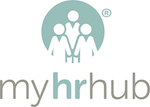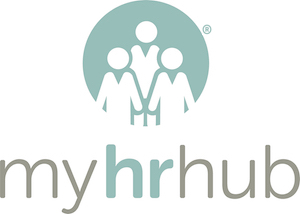April brings many employment law changes for businesses as we know, one of the most significant and still the most unclear is the Apprenticeship Levy. At My HR Hub we offer a generalist recruitment service and have long been fans of apprenticeships, having seen the immediate benefits they bring – for example:
- They offer the real hands-on experience (‘earn while you learn’)
- You get trained in the skills that employers want
- Excellent progression opportunities
- Increased future earning potential with advanced apprenticeships
So, why is the Levy being introduced and what are the changes?
The Government is committed to developing vocational skills and to significantly increasing the quantity and quality of apprenticeships.
From April 2017, larger UK employers with a PAYE bill in excess of £3 million will pay a levy to fund new apprenticeships. This is designed to increase the quantity and quality of apprenticeships and place control of funding with the employer. All UK employers will be able to access the funds generated by the levy and use apprenticeships to develop their staff.
There will be new styles of apprenticeship, designed specifically to meet the changing needs of employers, learners and providers. This will see new employer-led apprenticeship ‘standards’ developed to replace the old apprenticeship ‘frameworks’.
The new standards will:
- Define an apprenticeship as one that lasts a minimum of 12 months
- Be linked to a specific occupational level
- Respond to employers’ needs, ensuring that apprenticeships are high-quality and develop the knowledge, skills and behaviour required for a specific job role
How will the Government collect the levy?
The payments will be collected monthly from April 2017 by HM Revenue and Customs (HMRC) through Pay as You Earn (PAYE), alongside tax and National Insurance.
What are the penalties for non-payment?
There will be the same time limits, penalties and appeal procedures as for income tax.
What happens to the money once it’s paid?
Once paid, companies will be able to access funding via a new Digital Apprenticeship Service (DAS) account.
You will be able to use this to pay for apprentice training. In addition to the amount paid into the account, the Government will apply a 10% top up on funds (so for every £1 put in, the employer gets £1.10 to spend).
What does the Apprenticeship Levy mean for small employers?
If your company has a pay bill of less than £3 million you will not have to pay the Levy. In England, you will still be able to access government support for Apprenticeships through the National Apprenticeship Service.
How will I draw down from the levy fund?
In England, you’ll need to register your details online, along with the details of your apprentice. You’ll be able to see how much can be drawn down for each apprentice in the form of the voucher. You can then use these vouchers to spend on training with registered training Company from late May 2017.
Use it or lose it…
When the Levy is introduced in April, your Company will start making monthly payments and if you fail to spend all of your payment, they will go unclaimed and you may lose them. What’s more, is that any unclaimed payments will then be available to other businesses looking to spend more.
At My HR Hub, we recommend following these seven key steps to ensure you are ready for the introduction of the Apprenticeship Levy in April 2017.
Tip 1 – Your spend
Firstly, calculate what your levy payments will actually be; simply calculate 0.5% of your gross annual payroll or check the many online calculators. If you are eligible, you will then need to report your Apprenticeship Levy each month using your Employer Payment Summary (EPS).
Tip 2 – Business needs
This is the most important step. You’ll need to identify which areas of your company could benefit from a skills boost. This could be developing an existing employee or taking on a new apprentice.
Tip 3 – Partner with a quality training provider
There are lots of providers out there offering a range different subjects and qualifications, from smaller niche providers to larger providers with a more diverse range of subject areas.
Tip 4 – Pilot scheme / review existing programme
If you already have an apprenticeship scheme, now is the time to review this, ideally with your apprentice and the apprentice provider, so. What worked well and what could have been improved? This will help you evaluate and redesign if appropriate.
Tip 5 – Expansion
By April 2017 you may be ready to expand your delivery. Having identified which departments/qualifications work best, you should be in the perfect position to recruit more apprentices or place more existing staff on programme, enabling you to maximise your return on the levy.
At My HR Hub we have supported many companies to scope out, identify and take on apprentices. We also have reliable and outstanding Ofted-rated partners that help us deliver apprentices for our clients. Please feel free to get in touch if you would like more information.


Recent Comments